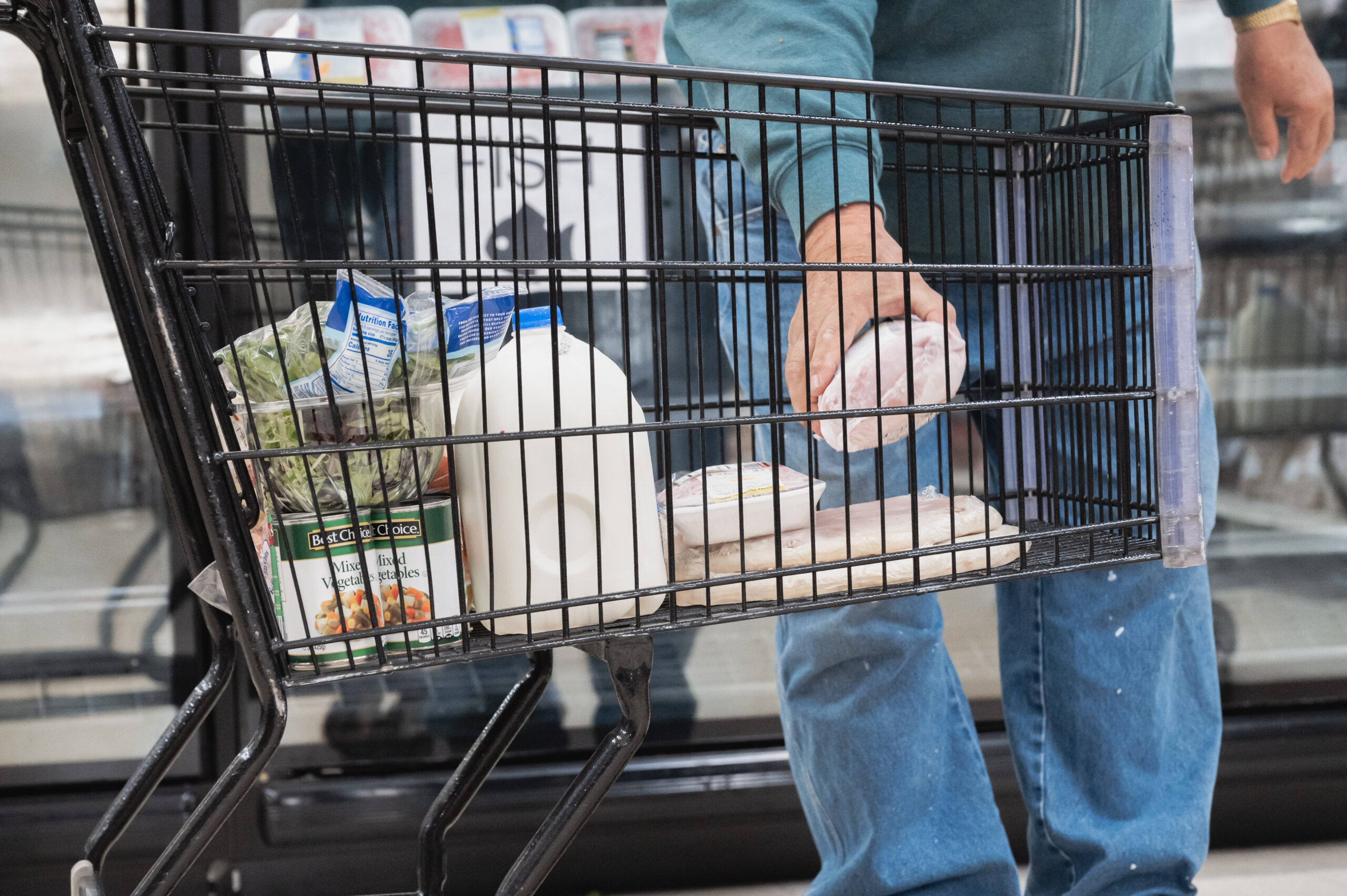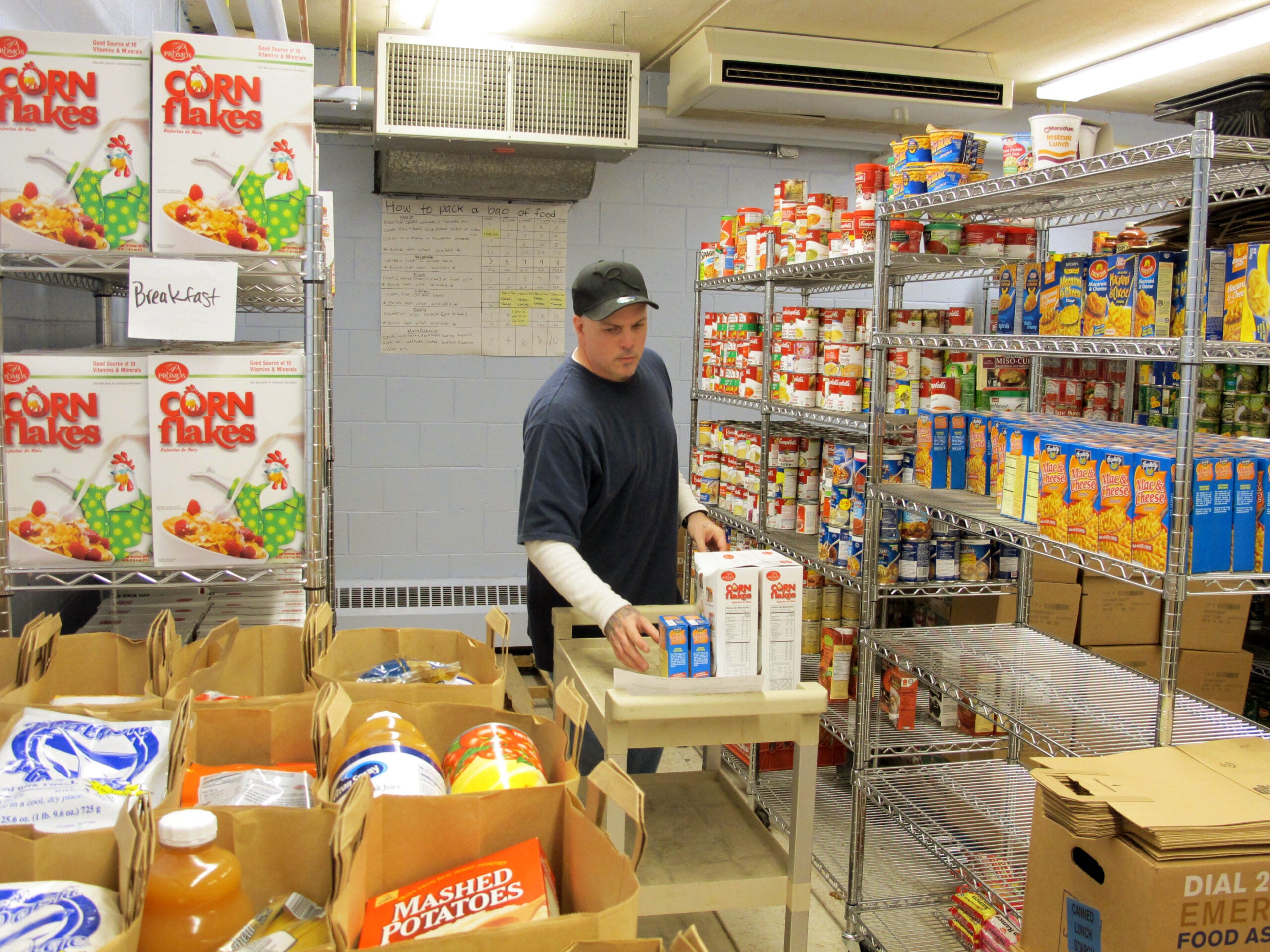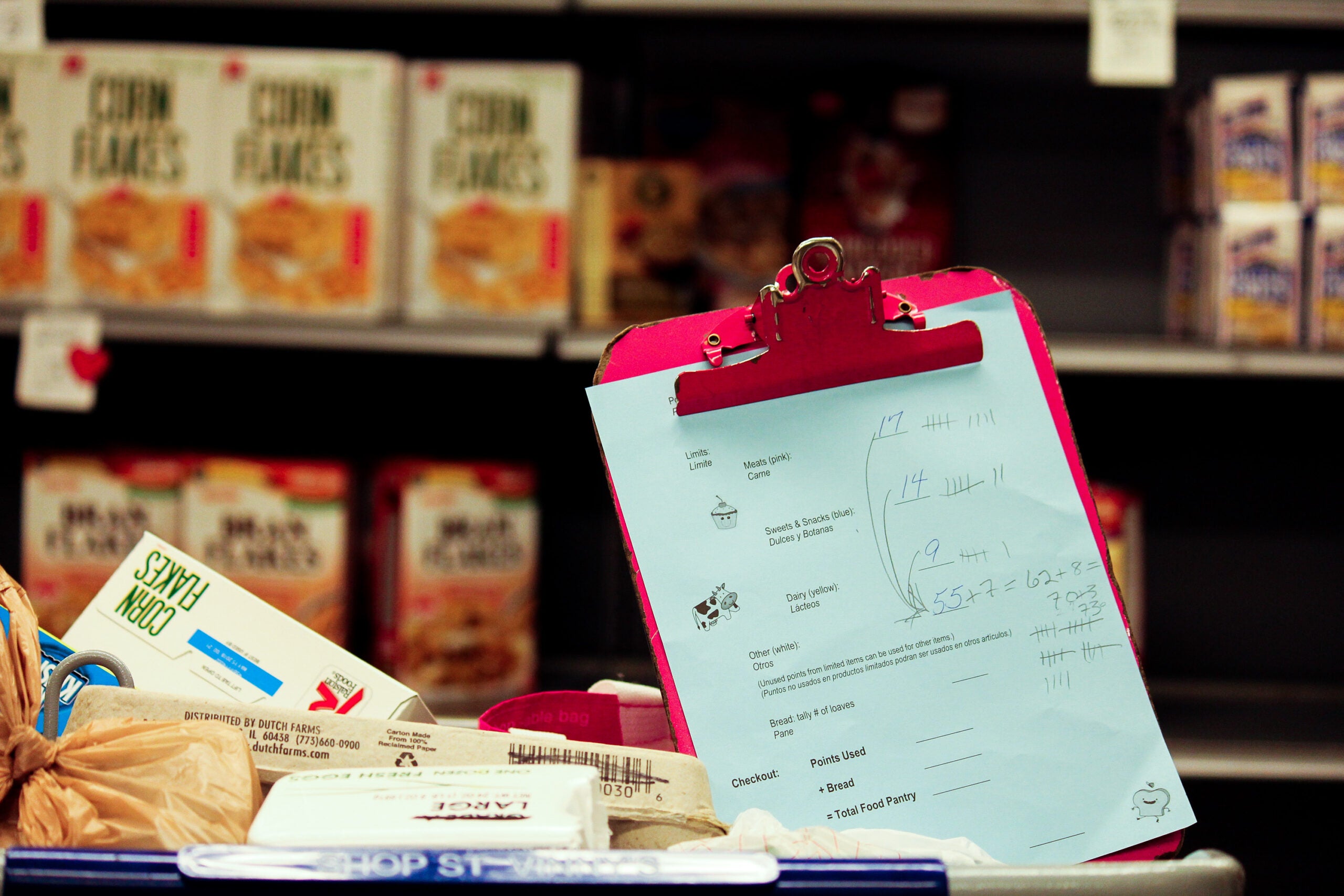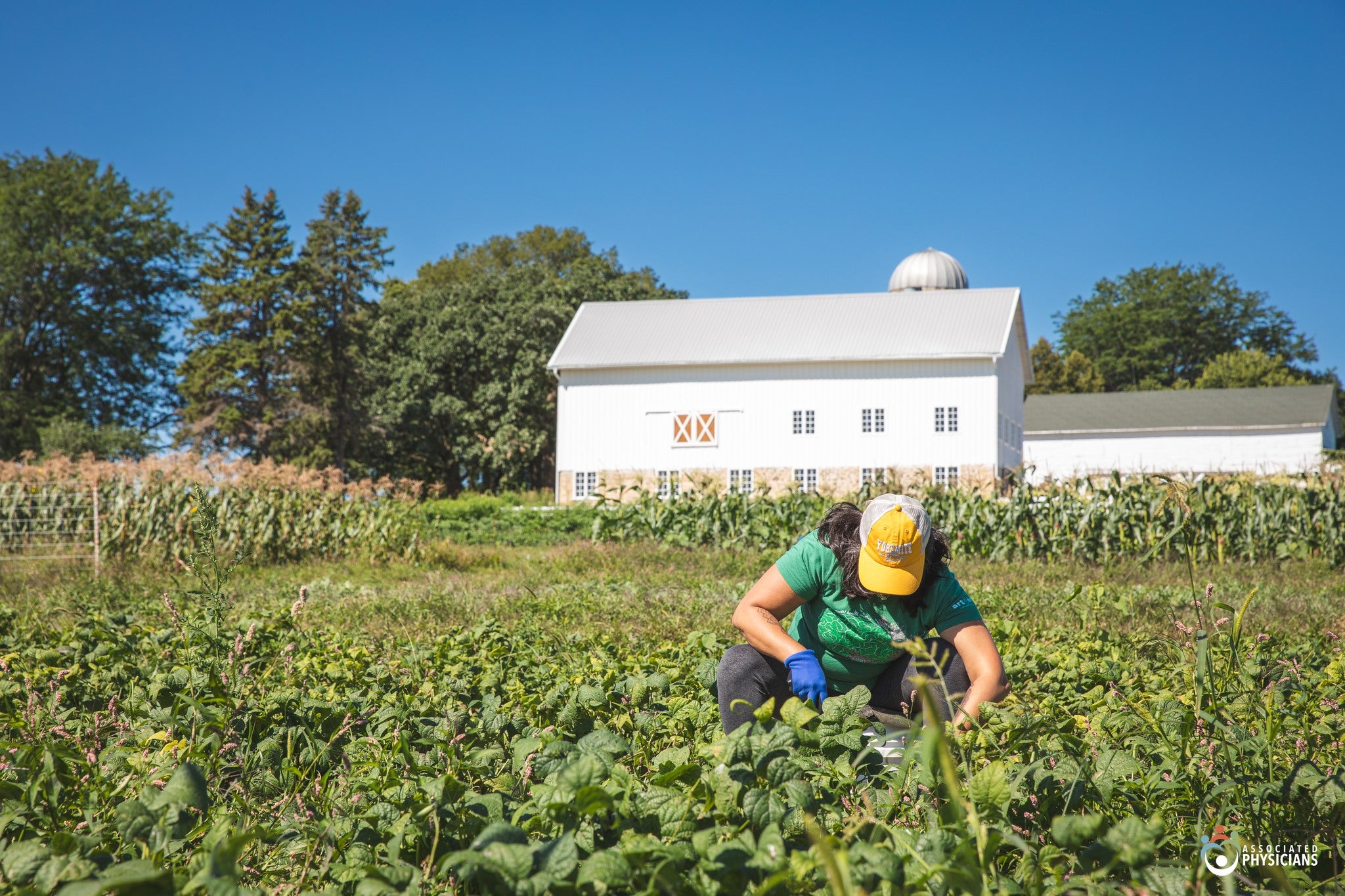This story was originally published by Wisconsin Watch and WPR.
Wisconsin’s emergency food pantries can now decide whether to check clients’ identification and verify their addresses. By October, the state will require them to stop asking.
The change will improve access to a key federal program, the Wisconsin Department of Health Services said. Some pantry coordinators support the changes, but others counter that it could complicate their work. They say the state has yet to answer important questions.
News with a little more humanity
WPR’s “Wisconsin Today” newsletter keeps you connected to the state you love without feeling overwhelmed. No paywall. No agenda. No corporate filter.
Several coordinators voiced concerns when the health department last month announced changes that affect 265 state food pantries that accept food from The Emergency Food Assistance Program, or TEFAP. The federally funded program provides healthy foods that pantry donations don’t always cover, including milk, eggs, meat, fresh fruits and vegetables. Most participating pantries rely on the program for a significant amount of their food.
The overhaul comes as demand for emergency food surges following the expiration of extra FoodShare benefits during the pandemic.
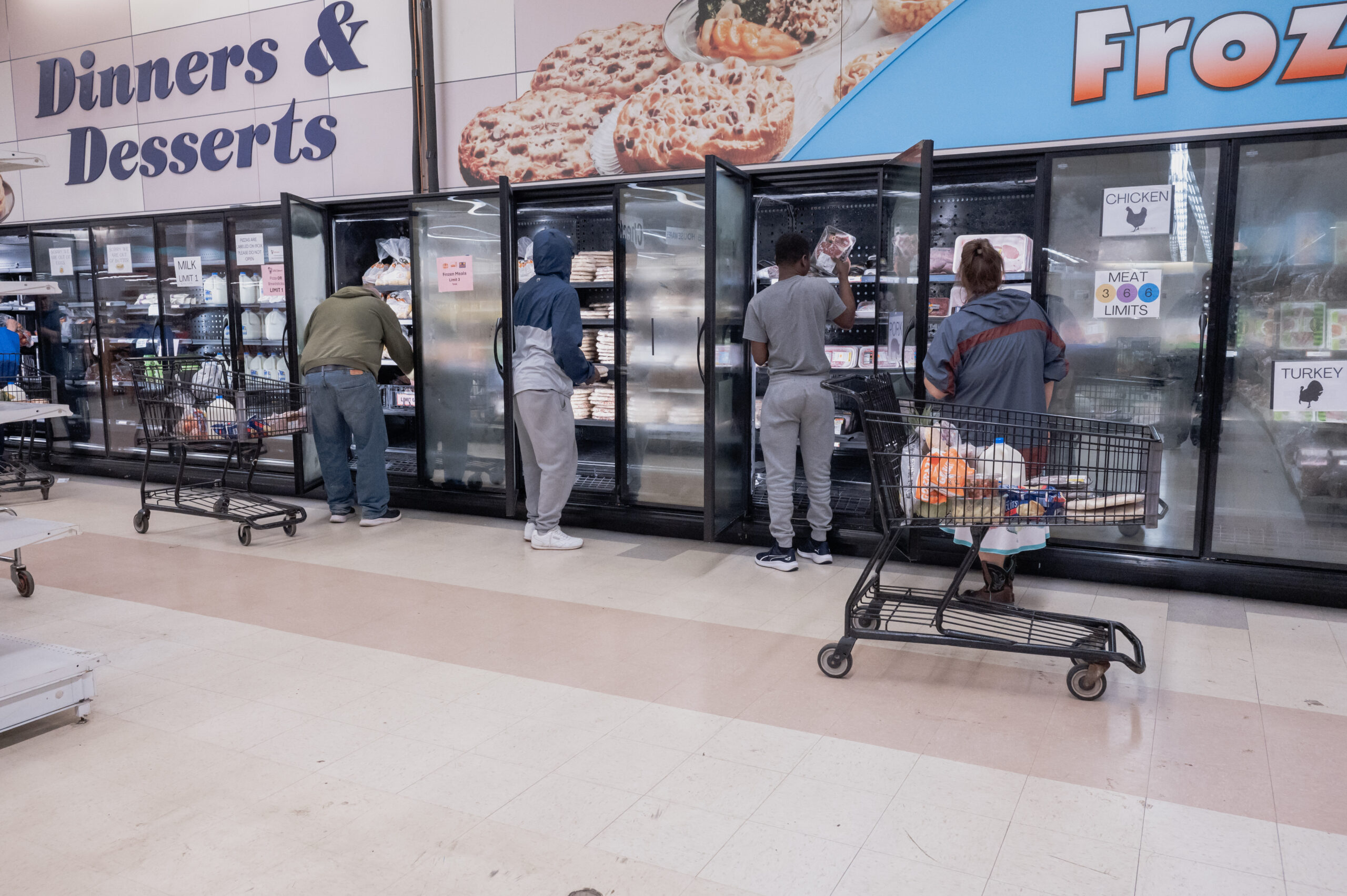
The state previously required pantry workers to check IDs of every person in a household and verify the person lived in the pantry’s county. While pantries made exceptions for certain vulnerable groups with less access to IDs and fixed addresses, requesting that information creates unnecessary obstacles to food, supporters of the change say.
“We want to make sure people have an equitable and dignified way to receive food and we feel like the less information gathering in that regard that’s allowable, the better,” a health department spokesperson said.
With the change, Wisconsin joins 35 other states, including neighboring Minnesota, Illinois and Michigan, where TEFAP pantries don’t ask for ID.
Some anti-hunger advocates say eliminating ID checks could create local food shortages. Others support the change but worry about how to accommodate a potential influx of out-of-county clients and track demographic information about their visitors.
‘A horrible feeling’ to be turned away
Emma Tomberlin started experiencing homelessness in Madison 10 years ago. Someone stole her ID at the time, and she couldn’t afford a replacement, she said.
She didn’t realize a local pantry would ask for identification before distributing food and hygiene products. After coordinating a ride one day and waiting in line, she said, the pantry turned her away.

“To realize that I was not worthy of food because I didn’t have an ID, and to be told that and to be turned away hungry, is just a horrible feeling,” Tomberlin said.
She moved into her own apartment about two years ago, but she’s still not sure she could gather the paperwork the pantry’s website says it requires.
Under the previous state requirements, Wisconsin’s emergency pantries would still serve people without proper documentation during initial visits but, in rare cases, might block those who repeatedly returned without verifying their address. Unhoused people, undocumented immigrants and survivors of domestic abuse had additional leeway, guaranteeing service even on repeat visits without full documentation.
But perceptions matter just as much as procedure when it comes to food access, said Joli Guenther, executive director of the Wisconsin Association for Homeless and Runaway Services. She supports the eased state requirements.
Asking for an ID might discourage people most in need from showing up, Guenther said.
“We do want food pantries to be as low barrier as possible because that’s such an immediate need.”
Fears of food shortages
TEFAP makes emergency food aid available to households who make no more than twice the federal poverty level. That’s $40,880 annually for a two-person household.
Even before the latest changes, clients could self-declare their income without bringing proof. Before the COVID-19 pandemic, the state required pantries to collect client signatures attesting to their eligibility. Safety concerns during the pandemic halted the requirements, although some pantries later resumed collecting signatures.
“To realize that I was not worthy of food because I didn’t have an ID, and to be told that and to be turned away hungry, is just a horrible feeling”
Emma Tomberlin
That included Milwaukee-based Hunger Task Force, an anti-hunger nonprofit that relies on TEFAP for about half of its food bank supply. The signature requirement discouraged people from untruthfully claiming eligibility or inflating their household size — increasing the likelihood that food would go to people most in need, Hunger Task Force CEO Sherrie Tussler said.
Pantries may no longer collect such signatures under the state changes. That will make it virtually impossible to stop people from taking food they don’t need, Tussler contends.
“It’s completely ungoverned,” Tussler said. “Nobody’s answering the question, what’s really going to happen when we have food shortages?”
State officials don’t expect that to happen. The state health department found no shortages in surrounding states that lack identification and signature requirements, a spokesperson said.
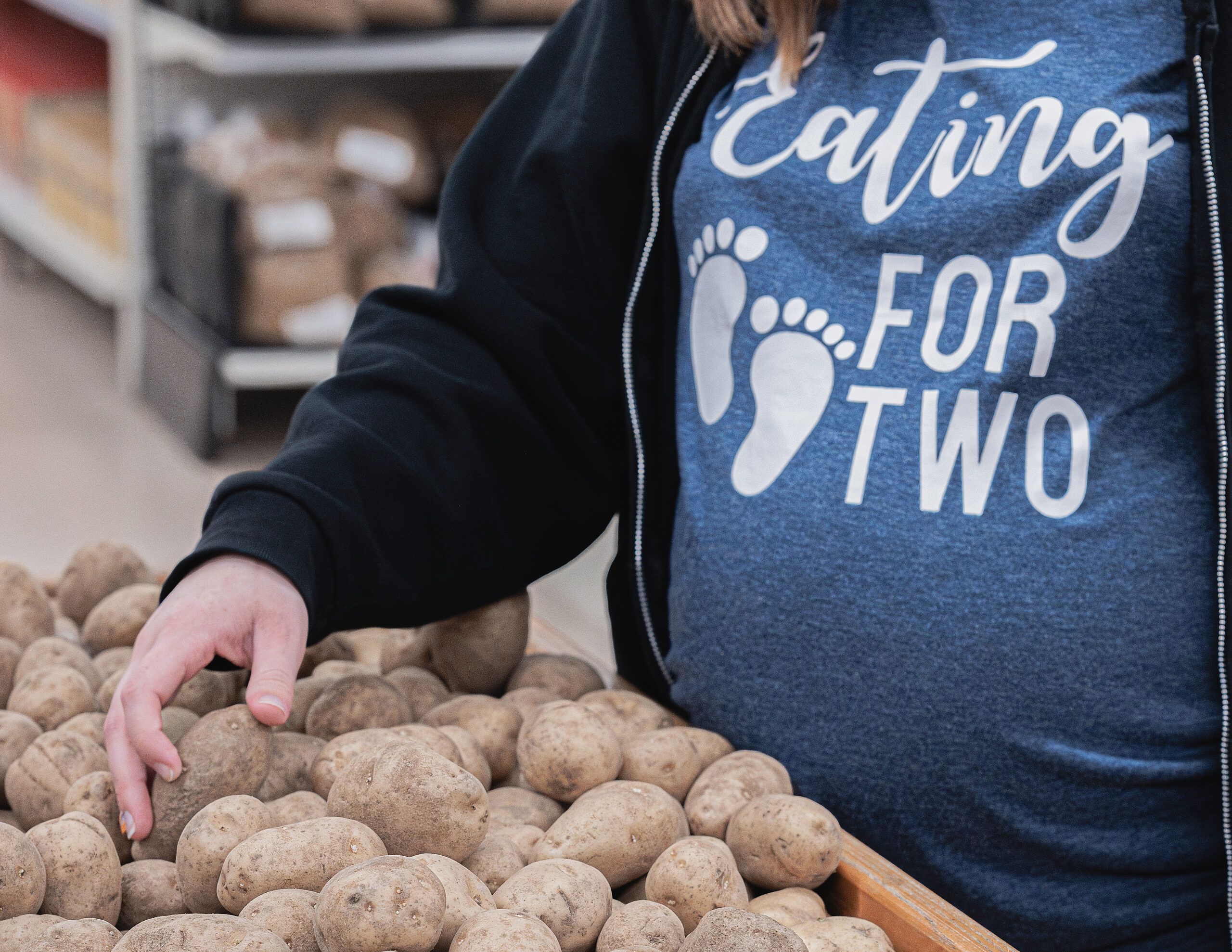
Channel One Regional Food Bank, which serves residents of 13 Minnesota counties and Wisconsin’s La Crosse County, has faced no issues abiding by an honor system in Minnesota, said Virginia Witherspoon, its executive director.
“This truly gets down to what you believe about people, and if you believe that people are trying to take advantage of a system,” she said. “We don’t see that.”
Among supporters of loosened identification requirements: Melissa Larson, food access and resource program manager at West CAP, which serves seven western Wisconsin counties.
In small-town pantries like West CAP’s, workers already know their clients on a first-name basis, and ID checks only create obstacles.
“In a rural area, it’s completely different,” Larson said.
Feeding America Eastern Wisconsin, which operates pantries in rural, urban and suburban areas of northeast Wisconsin and around Milwaukee, also welcomes the changes.
“We expect that the good this program will accomplish, the new enrollments and access this would facilitate, the increased ease of distribution, and the increased dignity and compassion this would provide to the participant will greatly outweigh the potential risk,” John Zhang, the organization’s director of community and government relations, told WPR and Wisconsin Watch in an email.
Expanded options for pantry clients
Ryan Rasmussen, executive director of the Oshkosh Area Community Pantry, doesn’t expect people to start taking food they don’t need.
“We get this question asked a lot about, ‘How many folks do you think are actually taking advantage of your pantry?’ And quite honestly, my response is zero,” he said.
But Rasmussen worries the revised guidelines will increase visits from outside of Winnebago County.

The federal government distributes emergency foods to pantries based on local poverty and unemployment rates. New state rules will allow clients to regularly visit any pantry statewide — even if it lies outside of their home county.
Rasmussen sees the potential for mismatches between resources and demands on some pantries during a time of growing demand.
While health department officials see no evidence that the new guidelines will spur a spike in cross-county visits, they will explore other food distribution models if issues arise, a spokesperson said.
Oshkosh Area Community Pantry saw a 70 percent increase in usage between 2022 and 2023, Rasmussen said. The pantry last year served 800 households from outside of Winnebago County. Workers then could refer those clients to options in their home county for future visits — easing demands on local resources, Rasmussen said.
“The need is definitely growing and it’s definitely great,” Rasmussen said. “We’re doing all that we can to make sure that we stay ahead of it.”
For Kenneth Tackett, two monthly visits to the Oshkosh pantry cover most of his needs, and there’s no reason to visit other pantries.
“It’s where I get my bread, vegetables, potatoes, meat,” he said. “I feel blessed to have the availability to be able to do something like this.”

Federal aid important for many pantries
Most pantries rely on a mixture of TEFAP, food banks, grocery stores and donations. The federal program was an important source of food for 89 percent of pantries participating in the program, according to a state health department survey.
Nearly a quarter of participating pantries get most or all of their food from the federal program, the survey showed. Most participants call the program’s food “very healthy.”
The state health department says loosening restrictions for pantry visitors might expand pantry participation. Most pantries that don’t participate have “quite a bit” or “a great deal” of concern with program requirements and associated paperwork, survey responses show.
Most participating pantries reported no issues with requirements and reporting, and multiple pantry directors worry about losing mechanisms to collect information needed to apply for funding.
The Sharing Center, a rural food pantry in Kenosha County, gets about 90% of its food from donations, with 10 percent coming from TEFAP, said Sharon Pomaville, the organization’s executive director.
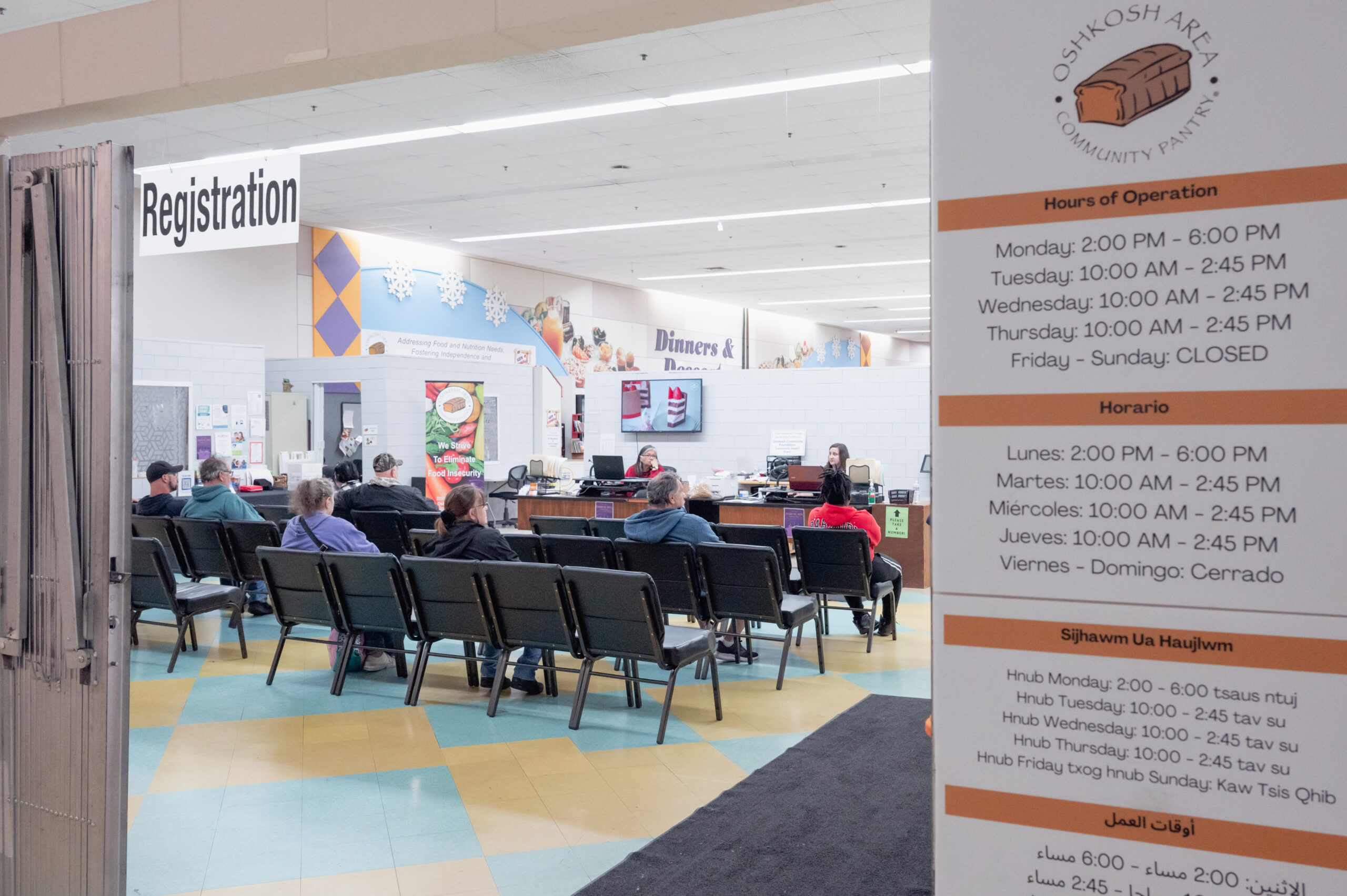
Donors often question whether the pantry is “a free-for-all” that doesn’t scrutinize who receives assistance, Pomaville said.
Pomaville added in an email that she expects her organization to opt out of the federal program “because it’ll gut our pantry, and not allow us to collect data that allows us to secure critical programmatic grants for seniors, children, and veterans.”
State officials say pantries can still collect data, such as the ages of their clients, for food not associated with the federal program. But workers must clarify the questions aren’t required for TEFAP foods — potentially requiring pantries to adopt different procedures for different types of foods.
Some pantry leaders feel out of the loop
Some pantry leaders say they felt excluded from the state’s decision-making process, and they were surprised to find an updated TEFAP client form on the health department website before officials told them about the changes directly.
The pantry directors currently lack access to an updated procedure manual, which the health department plans to publish in October.
A spokesperson said the health department asked regional TEFAP coordinators in November for feedback on the changes but heard little criticism until the department announced the changes in April.
“If the whole state would have come back to us with challenges, I think we would have had to look at this a lot closer,” the department spokesperson said.
Shane Fitzsimmons contributed reporting. This story comes from a partnership of Wisconsin Watch and WPR. Addie Costello is WPR’s Mike Simonson Memorial Investigative Reporting Fellow embedded in the newsroom of Wisconsin Watch.

